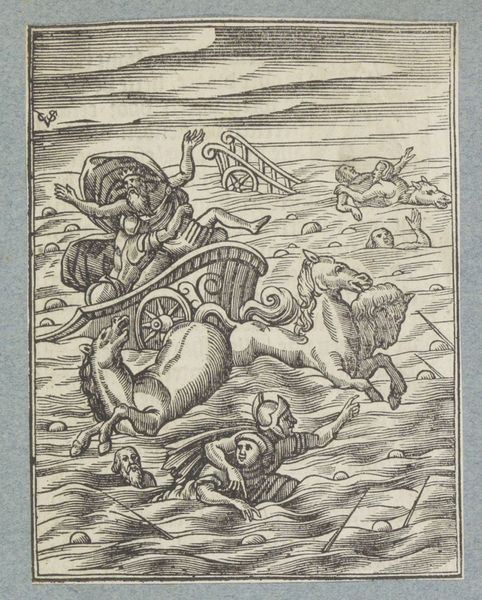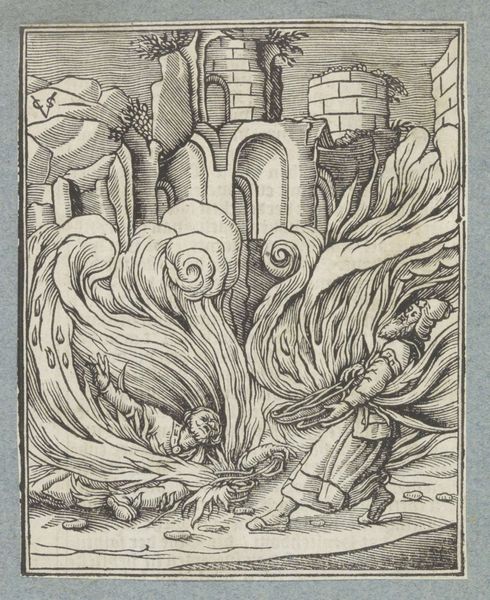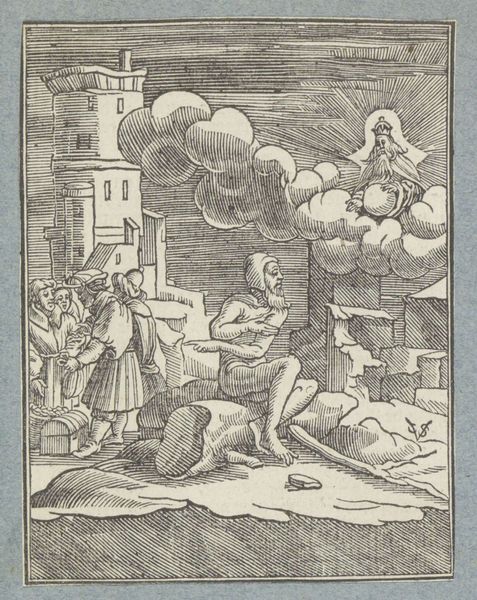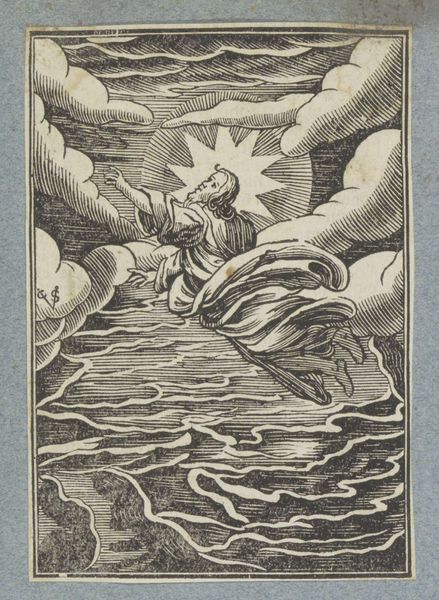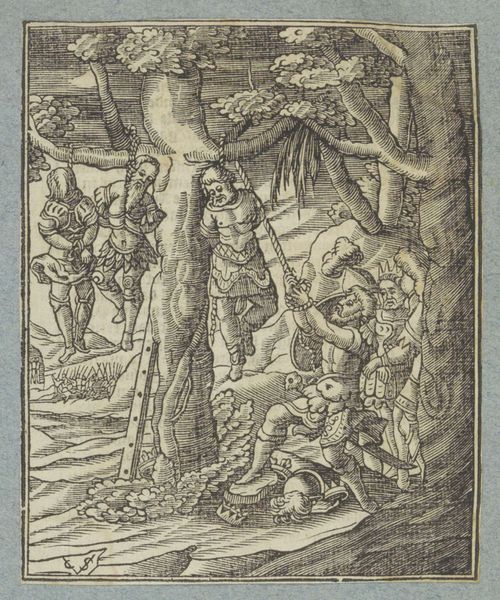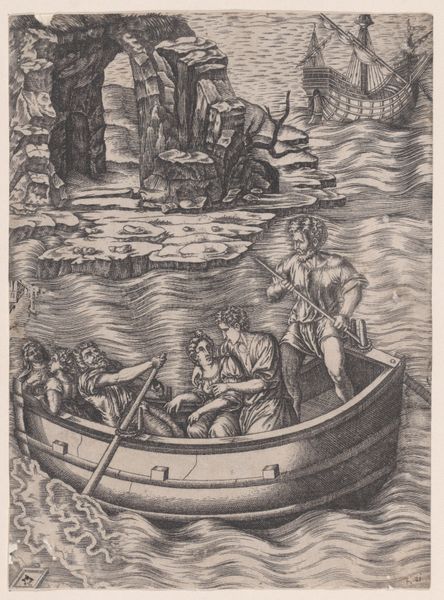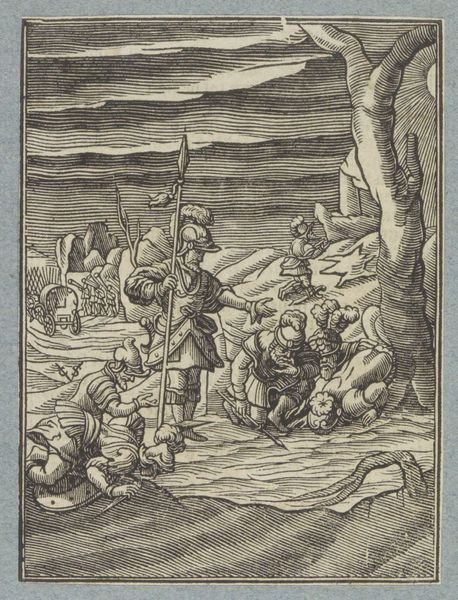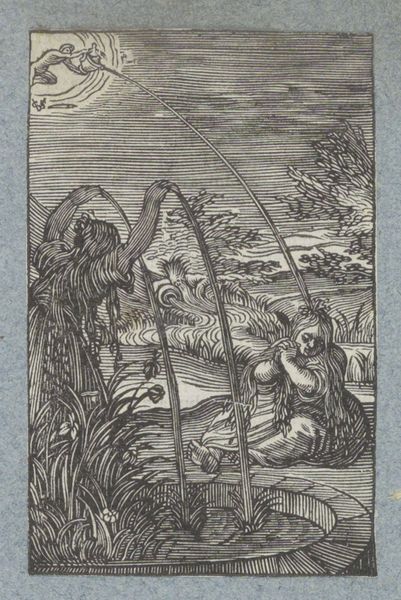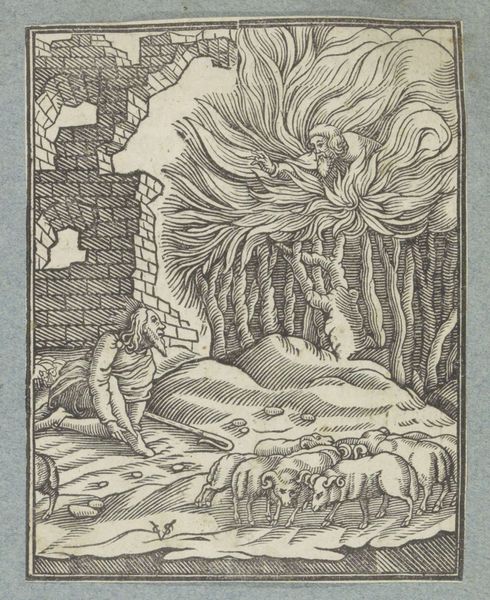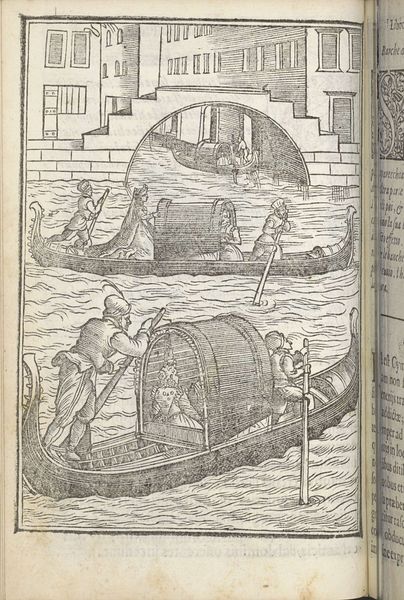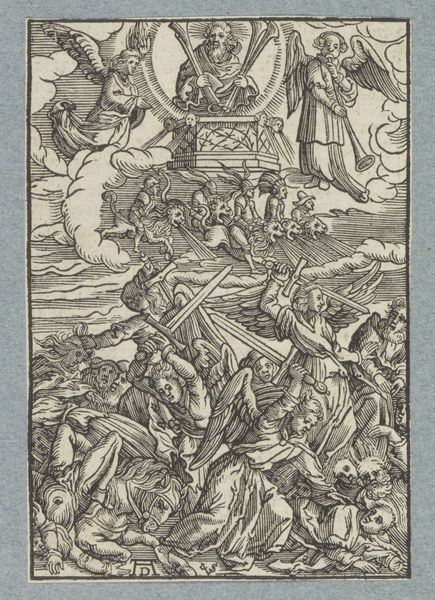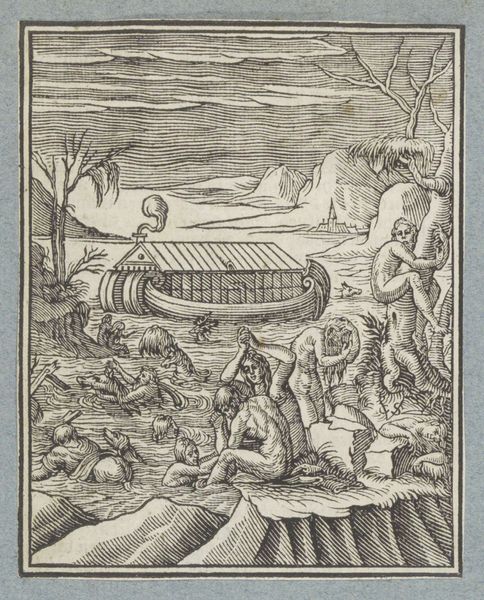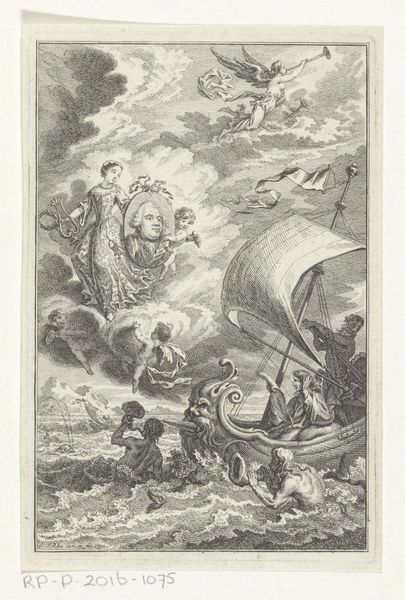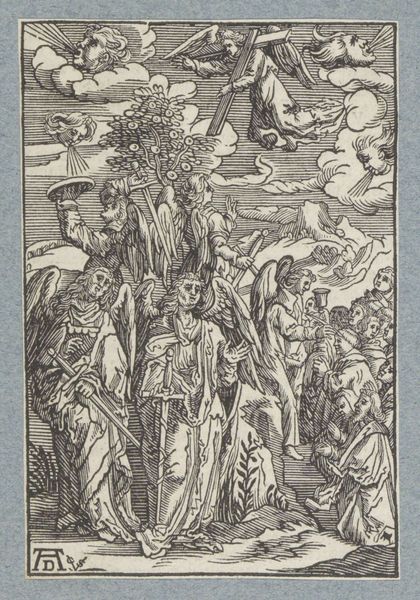
print, engraving
#
narrative-art
#
baroque
# print
#
pen sketch
#
personal sketchbook
#
pen-ink sketch
#
thin linework
#
line
#
pen work
#
sketchbook drawing
#
storyboard and sketchbook work
#
sketchbook art
#
engraving
#
doodle art
#
intricate and detailed
Dimensions: height 108 mm, width 88 mm
Copyright: Rijks Museum: Open Domain
Christoffel van Sichem II made this woodcut, “Jonah and the Whale,” sometime in the 17th century. Woodcut is a relief printing process, where the artist carves away the areas that will not be inked, leaving the design raised on the block's surface. Look closely, and you'll see how the material dictates the image. Sichem used the knife to create a dense network of fine lines, working with the grain of the wood. See how the parallel strokes create areas of light and shadow, defining the forms of Jonah, the whale, and the turbulent sea. The texture of the wood itself contributes to the print's overall aesthetic. The inherent qualities of the material influenced the final appearance of the artwork. Woodcut was a relatively accessible and affordable medium, making it popular for disseminating images and stories to a wide audience. The labor-intensive nature of woodcutting meant that skilled craftsmanship was highly valued. By appreciating the material and process behind this print, we gain a deeper understanding of its cultural and social significance.
Comments
No comments
Be the first to comment and join the conversation on the ultimate creative platform.
